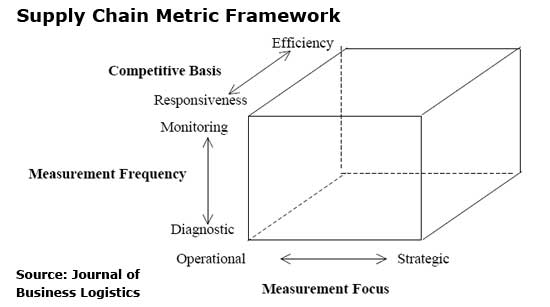SCDigest
Editorial Staff
| SCDigest Says: |
 The framework can enhance the ability of practitioners to visualize their measurement needs given a manager’s responsibilities and company objectives. The framework can enhance the ability of practitioners to visualize their measurement needs given a manager’s responsibilities and company objectives.

Click Here to See Reader Feedback |
Performance Management is one of the key supply chain Megatrends, with companies putting increasing focus and technology behind developing a range of scorecards and dashboards for themselves and trading partners.
A recent article in CSCMP’s Journal of Business Logistics caught our eye, presenting some additional research on a metrics framework that authors Stanley Griffis of the Air Force Institute of Technology, Thomas Goldsby of the University of Kentucky, Martha Cooper of The Ohio State University, and David Closs of Michigan State University first presented in 2004.
The basic thesis: that all metrics are not the same. They differ in their inherent focus and the type of measurement system that should be used.
The general model is illustrated in the graphic below. As can be seen, it encompasses three dimensions for each potential metric:
- The Competitive Basis: The degree to which the metric is focused on efficiency or customer/organizational responsiveness.
- The Measurement Focus: Is the metric more geared towards strategic or operational goals?
- The Measurement Frequency: Is the metric designed to be a continuous, maybe even real-time performance monitor, or more occasional diagnostic?

(Supply Chain Trends and Issues Article - Continued Below)
|